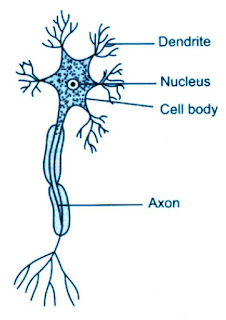NCERT Solutions for Class 6 Science Chapter 8 Body Movements
Body Movements: In NCERT Solutions for Class 6 Science Chapter 8 Body Movements Pdf free download.In NCERT Solution for Class 6 Science with Answers you get question-answer based on latest exam pattern. By providing NCERT Solutions for Class 6 Science Chapter 8 Body Movements with Answers our target to help students get the concept of the lesson very well.
You can also visit NCERT Solutions for Class 6 Science Chapter 8 Body Movements to revise your syllabus thoroughly and enhance the chances of securing high marks in your board exams. It also helps in your Body Movements Class 6 online test, online exam for admission well.
-------------------------------------------------------------
Board CBSE
-------------------------------------------------------------
TextBook NCERT
-------------------------------------------------------
CLASS Class 6
--------------------------------------------------------
SUBJECT Science
----------------------------------------------------------
CHAPTER Chapter 8
-------------------------------------------------------------
SUBJECT
Body Movements
--------------------------------------------------------------
NCERT Solutions for Class 6 Science Chapter 8 Body Movements
Exercises
Question 1:
Fill in the blanks:
(a) Joints of the bones help in the ______________________ of the body.
(b) A combination of bones and cartilages forms the _______ of the body.
(c) The bones at the elbow are joined by a ______________________ joint.
(d) The contraction of the _____________ pulls the bones during movement.
Answer 1:
(a) Joints of the bones help in the movement of the body.
(b) A combination of bones and cartilages forms the skeleton of the body.
(c) The bones at the elbow are joined by a hinge joint.
(d) The contraction of the muscle pulls the bones during movement.
Question 2:
Indicate true (T) and false (F) among the following sentences.
(a) The movement and locomotion of all animals is exactly the same. (T/F)
(b) The cartilages are harder than bones. ( T/F)
(c) The finger bones do not have joints. (T/F )
(d) The forearm has two bones. (T/F )
(e) Cockroaches have an outer skeleton. ( T/F)
Answer 2:
(a) The movement and locomotion of all animals is exactly the same. (False)
(b) The cartilages are harder than bones. (False)
(c) The finger bones do not have joints. (False)
(d) The forearm has two bones. (True)
(e) Cockroaches have an outer skeleton. (True)
Question 3:
Match the items in Column I with one or more items of Column II.
2
Answer 3:
Question 4:
Answer the following:
(a) What is a ball and socket joint?
(b) Which of the skull bones are movable?
(c) Why can our elbow not move backwards?
Answer 4:
(a)A ball and socket joint is a moveable joint. It has a rounded end of one bone fit into the cavity (hollow space) of the other bone. It allows movement in all directions. Example:
shoulder joints.
(b)Only the lower jaw in skull bones is movable.
(c) Elbow joint is an example of hinge joint which allows only back and forth movements. Therefore, we cannot move our elbow backwards.
NCERT Solutions for Class 6 Science Chapter 8 Body Movements


